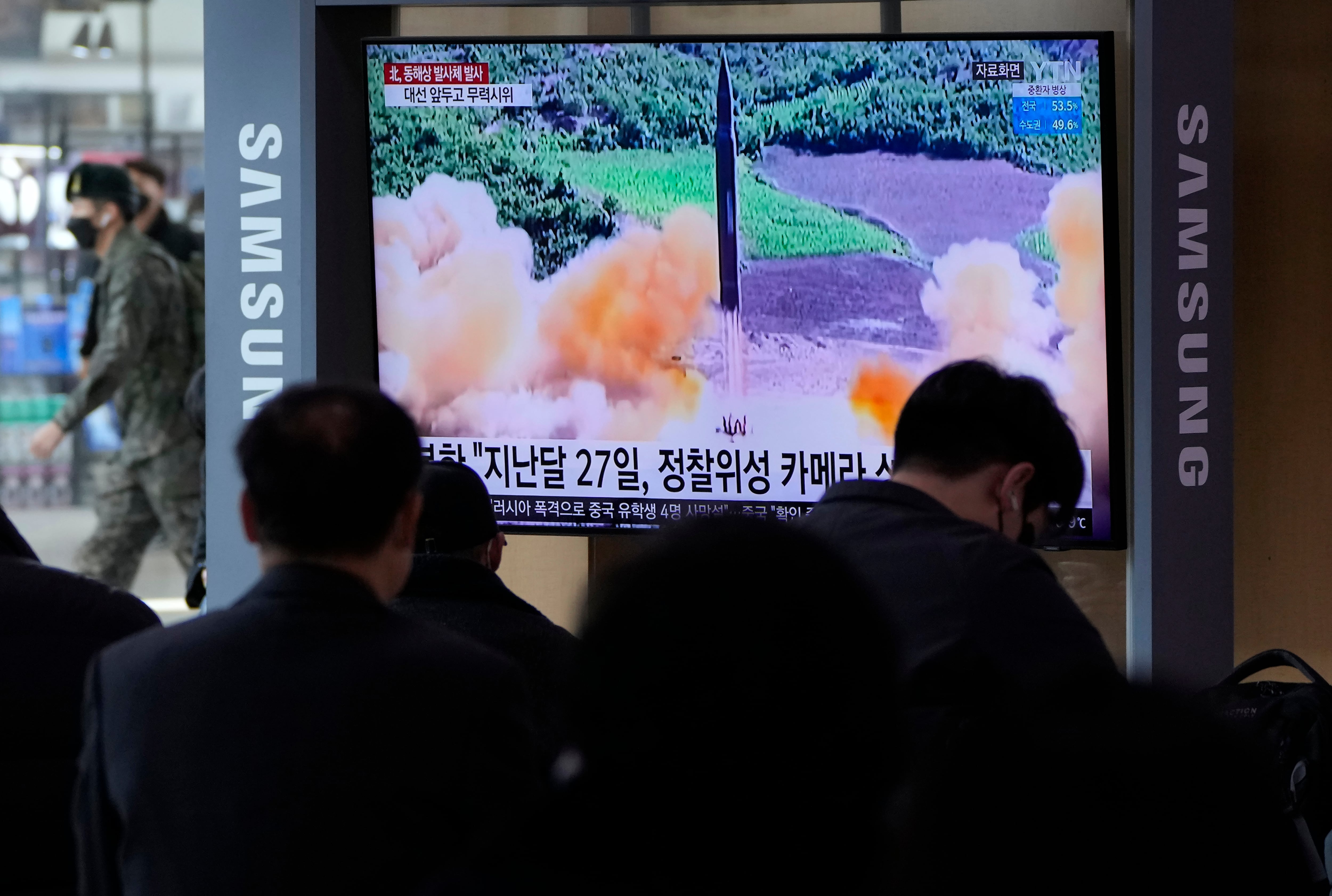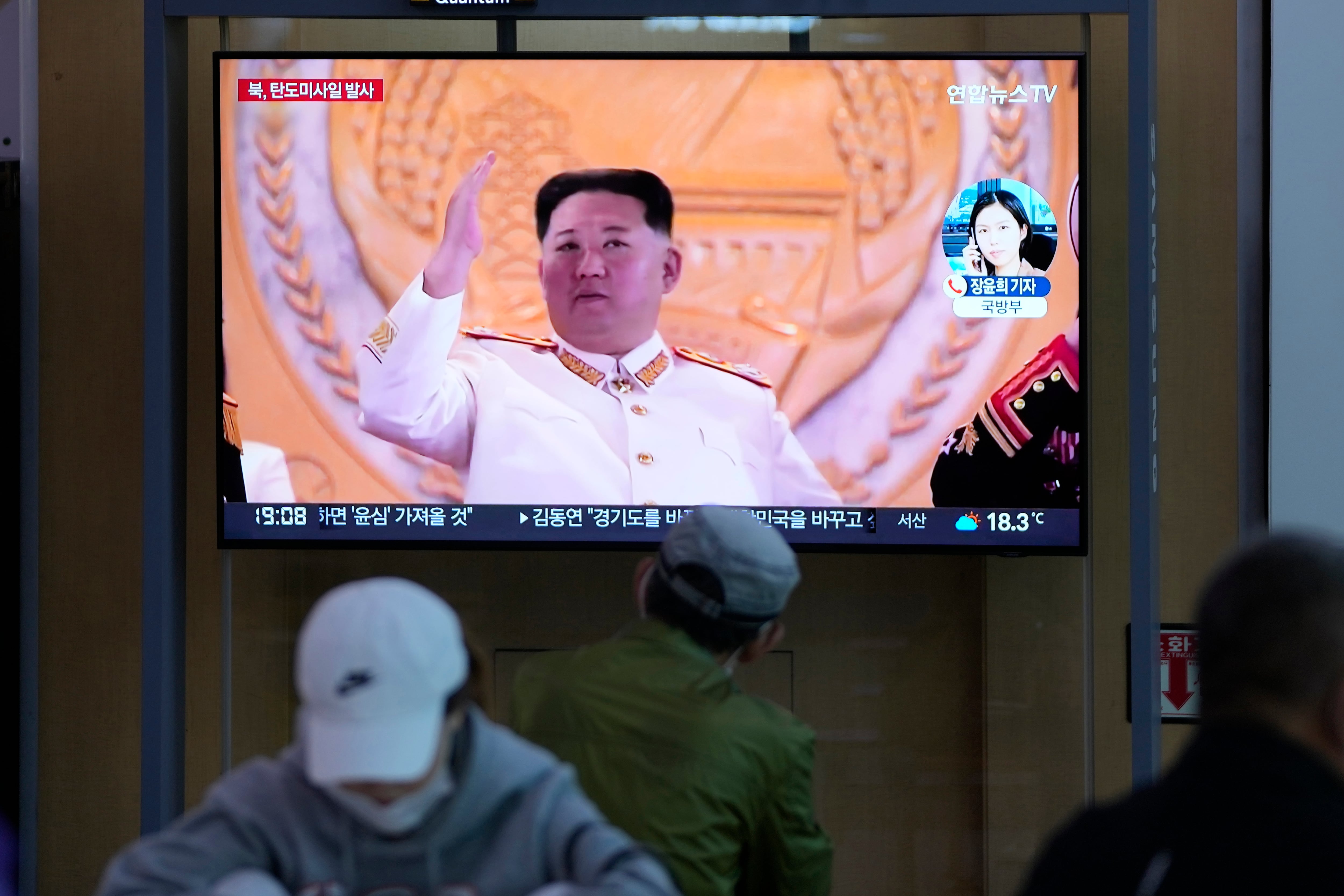SEOUL, South Korea — North Korea fired three short-range ballistic missiles toward the sea on Thursday, its neighbors said, in the latest of a series of weapons demonstrations this year that came just hours after it confirmed its first case of the coronavirus since the pandemic began.
The launches could underscore North Korea’s determination to press ahead with its efforts to expand its arsenal despite the virus outbreak to rally support behind the leader, Kim Jong Un, and keep up pressure on its rivals amid long-dormant nuclear diplomacy.
RELATED

Thursday’s launches were the North’s first weapons fired since the inauguration of new conservative South Korean President Yoon Suk Yeol on Tuesday.
North Korea has a history of rattling new governments in Seoul and Washington in an apparent bid to boost its bargaining chips in future negotiations. The North Korean nuclear threat will likely top the agenda when Yoon meets visiting U.S. President Joe Biden in Seoul next week.
Both South Korea and Japan condemned the launches from the North’s capital region on Thursday afternoon.
The missiles plunged into the waters between North Korea’s eastern coast and outside of Japan’s exclusive economic zone, Japanese Defense Minister Nobuo Kishi said. There was no report of damage to aircraft or vessels.
South Korea’s military said it boosted its readiness and surveillance while maintaining close coordination with the United States. It called on the North to immediately halt its repeated missile firings.
South Korea and Japan released similar flight details, saying the weapons traveled about 350-360 kilometers (217-224 miles) at a maximum altitude of 90-100 kilometers (56-62 miles).

Earlier Thursday, North Korean state media confirmed the country’s first COVID-19 infections as Kim ordered nationwide lockdowns to slow the spread of the virus. Kim also ordered officials to bolster the country’s defense posture to avoid any security vacuum.
In recent months, North Korea has test-launched a spate of missiles in what experts call an attempt to modernize its weapons and pressure the United States and its allies into accepting it as a nuclear state and relax sanctions on the North. Some observers say that despite the elevated anti-virus steps, North Korea would likely continue to build its arsenal with weapons tests to boost public morale and strengthen loyalty for the Kim leadership.
“North Korea’s latest missile firings appear excessive to what would be needed to test and improve military capabilities,” Leif-Eric Easley, a professor at Ewha University in Seoul, said. “These launches look like a show of strength after the Kim regime publicly admitted to a coronavirus outbreak.”
A statement issued after a meeting chaired by Yoon’s national security adviser Kim Sung-han said South Korea would seek “practical” and “stern” measures in cooperation with the international community to respond to the growing North Korean threat.
The North Korean weapons tested recently included a variety of nuclear-capable missiles that could potentially reach South Korea, Japan or the mainland U.S. In March, North Korea ended its self-imposed suspension on huge weapons tests since 2018 with a launch of its biggest missile capable of reaching the entirety of the American homeland.
The U.N. Security Council has typically imposed punishing sanctions on North Korea after it carried out nuclear and long-range missile tests. But that didn’t happen in March because veto-wielding members are divided over Russia’s war in Ukraine.
Last Saturday, South Korea detected a North Korea ballistic missile launch likely from a submarine, the first such test since last October. There are also signs that the North is preparing to conduct its first nuclear test in nearly five years at a remote testing ground in its northeast.
Yamaguchi reported from Tokyo.
